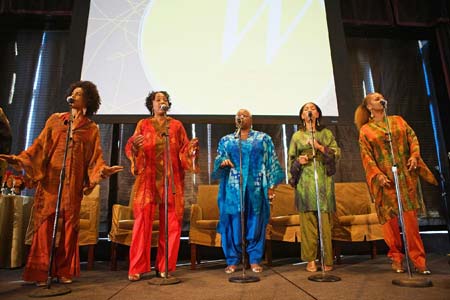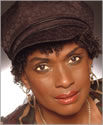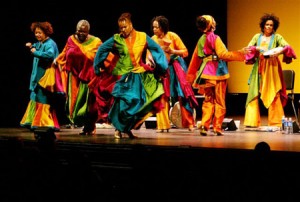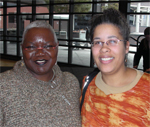How Sweet They Is – Part 2
As you know, a few weeks ago, I attended a free community workshop presented by Sweet Honey’s Aisha Kahlil. Here (finally!) is my account of that workshop and my brief meeting with Ms. Kahlil.
…
Improvising with Aisha Kahlil
The workshop took place after a program celebrating the culmination of a poster design contents at Center for Independent Artists (www.c4ia.org) and included performances by several youth groups. The Sankofa Drummers who opened the program with African drumming were joined later by their dancers — a talented and highly energetic group of young ones from kindergarten to middle school. Voices of Truth and a student gospel choir (sadly the name of their school escapes me) rounded out the pre-workshop performances.
Aisha Kahlil moved the audience quickly and fluidly into a large singing circle and then assigned an (improvised?) pattern to the circle. She deftly added multiple parts and had the whole room (even the deaf and hard of hearing attendees) participating.
(Both Kahlil and Barnwell practice the method of getting people singing promptly. It’s a supportive combination of expecting and assuming that groups are willing and able to sing communally. Diving right in also can be an effective way to avoid the BBHoF.)
Kahlil has an extensive dance and vocal improv background and both these influences permeated her improvisational, high-energy workshop. She used an African drumming pattern to work on rhythmic singing and incorporated African dance moves (at which the Sankofa Dancers excelled and the rest of us happily flailed) into a routine to accompany the piece.
I enjoyed how Kahlil intuitively used the principle of the drum break to move the group between instruction and singing and back again. It cemented the purpose of the break’s function in a clever and practical way. Admittedly, when we were singing, we were never able to implement this quite as well Kahlil demonstrated. And, most of our Midwestern tongues tripped over the syllables and rhythms at first (and again later when we picked up speed).
…
After the workshop, I pushed myself to go and introduce myself. I wanted to tell Ms. Kahlil that I planned to share her workshop here with you, my loyal readers and I also wanted to compliment her on keeping such a large group engaged throughout her presentation. Kahlil’s facilitation style is similar to my own and observing her direct this group was invaluable.
I would never have guessed that she was such a tiny person. It felt like I towered over her. (I’m sure this is an exaggerated impression, but I rarely tower over anyone!) And I’ve always experienced the Sweet Honey women as larger than life having seen them only in performance. On stage, Kahlil exhibits huge presence and charisma.
…
Long story short (okay, not that short since it took me 3 weeks to write it all down), I met two of my a cappella heroines in one weekend.
AND … I got to sing with them. How sweet.



